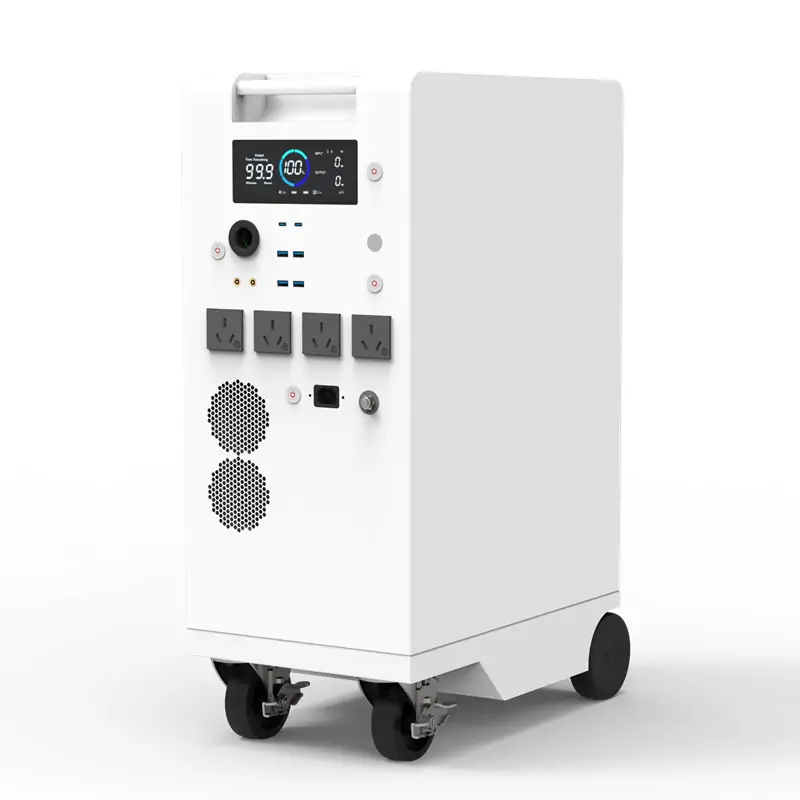C rate is an important parameter for evaluating how quickly a battery charges and discharges relative to its rated capacity. Whether you are using lithium-ion batteries or lead-acid batteries, understanding the C rate can help you choose the right battery and ensure its optimal performance.
So, how to calculate C rate of battery?
In simple terms, to calculate C rate of a battery, you need to divide the charge or discharge current (in amperes) by the rated capacity of the battery (in ampere-hours). For example, a 100 Ah battery discharged at 50 A has a C rate = 50 ÷ 100 = 0.5C. This means that the battery will be fully discharged in 2 hours.
Below we will explain in detail the definition of C rate, how to calculate it, its importance, and its application to different battery types.
Table of Contents

What is C Rate?
The C rate is a measure of the rate at which a battery charges or discharges relative to its rated capacity, and is denoted by “C”. 1C means that the battery is fully charged or discharged in one hour, 0.5C means two hours, and 2C means half an hour.
For example, for a 100 Ah battery:
• 1C: Provides 100 A for one hour.
• 0.5C: Provides 50 A for two hours.
• 2C: Provides 200 A for 0.5 hours.
The C rate is a key indicator of battery performance, affecting how it performs in different applications, such as power tools, drones, or grid energy storage systems.
Classification of C Rate
1. Low C rate (<1C)
Features: small charge and discharge current, long charge and discharge time.
Application: suitable for low-power, long-term use scenarios, such as energy storage systems, solar energy storage, backup power supply, etc.
Advantages: stable battery operation, low heat generation, and long life.
2. Medium C rate (1C-5C)
Features: moderate charge and discharge current, short charge and discharge time.
Application: suitable for consumer electronics (such as mobile phones, laptops), electric bicycles, electric scooters, etc.
Advantages: balance energy density, power output and battery life.
3. High C rate (>5C)
Features: large charge and discharge current, extremely short charge and discharge time.
Application: suitable for scenarios requiring high power output, such as drones, power tools, electric vehicles, racing cars, etc.
Advantages: can provide instantaneous high power output to meet high energy needs.

How to Calculate the C Rate?
Basic Formula
To calculate the C rate, you need to know the charge or discharge current (in amperes) and the rated capacity of the battery (in ampere-hours). The formula is as follows:
C rate = Current (A) / Rated capacity (Ah)
Example:
50 Ah battery discharged at 25 A:
C rate = 25A/50Ah = 0.5C
This means that the battery will be fully discharged in 2 hours if discharged at a rate of 0.5C.
Calculate C Rate Using Time
If you know how long it takes to fully charge or discharge a battery, you can calculate the C rate using the following formula:
C rate = 1/time (hours)
Example:
If it takes 2 hours for a battery to fully discharge:
C rate = 1/2 (hours) = 0.5C
Calculate Current
If you know the C rate and rated capacity, you can calculate the current:
Current (A) = C rate * rated capacity (Ah)
Example:
100 Ah battery discharged at 2C:
Current = 2 * 100 Ah = 200A
Importance of C Rate
1. Battery selection: Different applications require different C-rates. For example, electric vehicles require high C-rates to support rapid acceleration, while backup power systems require low C-rates to extend discharge time.
2. Battery life: Charging and discharging at a rate higher than the recommended C-rate may shorten battery life. Knowing the optimal C-rate helps maintain battery health.
3. Performance: C-rate affects battery efficiency and the heat generated during operation. High C-rates can cause energy loss, especially in lead-acid batteries.

C Rate for Different Battery Type
Different battery chemistries support different C rate ranges:
• Lead-acid batteries: usually support lower C-rates (such as 0.05C to 0.2C) and are suitable for low-rate discharge applications.
• Lithium-ion batteries: support higher C-rates (up to 10C or higher) and are suitable for high-power applications such as electric vehicles and drones.
C Rate and Battery Capacity
The actual capacity of some battery types, especially lead-acid batteries, varies with discharge rate, a phenomenon known as Peukert’s Law. The higher the discharge rate, the lower the actual capacity. For example, a lead-acid battery rated at 100 Ah might provide 100 Ah at 0.05C (20 hours), but only 80 Ah at 1C (1 hour). Therefore, the rated capacity at a specific discharge rate needs to be considered when calculating the C rate.
In contrast, lithium-ion batteries have a more stable capacity at different discharge rates, making them suitable for high C rate applications.
Common Mistakes in Calculating C Rate
1. Confusing capacity units: Make sure capacity is in Ah and current is in A. If capacity is specified in mAh, divide by 1000 to convert to Ah.
2. Confusing charge and discharge C rate: The charge and discharge C rate of a battery may be different, so consult the manufacturer’s specifications.
3. Ignoring temperature effects: Temperature affects battery performance and C rate capability. Exceeding the recommended temperature range may result in performance degradation or damage.
4. Assuming linear behavior: At high C rate, actual capacity may be lower than expected due to factors such as internal resistance.
Conclusion
Calculating the C rate of a battery is a critical step in understanding and optimizing battery performance. By using the formulas provided in this article, you can easily calculate the C rate of any battery and ensure it is operating within the recommended parameters. This is essential knowledge for anyone from a hobbyist to a professional in the energy industry. Correctly applied C rate calculations can help extend battery life and improve device efficiency.
You may also like: High Discharge LiFePO4 prismatic battery cell.






